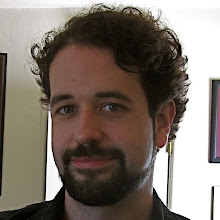While I was reading about the different kinds of Essential Questions, I started scribbling notes in the margins of the book about possible Essential Questions for my Ecology unit:
OPEN-ENDED, OVERARCHING:
- What is "life"?
- Why should we care about biodiversity?
- What makes an ecosystem desirable? Why should we care about protecting it?
OPEN-ENDED, TOPICAL:
- Are ecosystems driven more by negative interactions between organisms -- "nature red in tooth and claw", competition and predation -- or by positive interactions, such as cooperation and mutualism?
- What makes an ecosystem stable or vulnerable?
- Why is the world green? (I.e., why is so much biomass tied up in producers rather than consumers?)
- Are species' populations limited more by "bottom up" effects (food supply, available habitat) or by "top down" effects (predation)?
GUIDED:
- Where does the rain go after it falls?
- Where does the oxygen we breathe come from?
- In what ways do humans alter the environment around them?
- What happens to a body after it rots? Where do its components go?
- Why are decomposers important?
- Why are primary consumers (herbivores) important?
- Why are predators important?
- What traits might indicate that a species is more likely to survive disruptions in its habitat?
This may be too many essential questions for one unit, so I'll have to figure out which ones are most important to focus on. I'm very fond of the "Why is the world green" question -- both because of its deceptively simple phrasing and because it opens up the opportunity to explore a number of interconnected ideas about the roles of species in a community and the differences between top-down and bottom-up regulation. (The current working theory is that the world is green because predators keep herbivore populations below their carrying capacity, which prevents the herbivores from stripping the ecosystem of every available scrap of foliage. This is in marked contrast to the situation in most oceanic ecosystems, where primary producers -- algae -- are quickly eaten by primary consumers, which are in turn quickly eaten by the secondary and tertiary consumers who make up most of the system's standing biomass.)
This may be one of the most useful chapters to date, because it provides a methodology for getting at one of my chief objectives: getting students to think.
"Our students need a curriculum that treats them more like potential performers than sideline observers. They need to experience how their own inquiries and discussions are 'essentially' parallel to those of experts, and how even key agreed-upon understandings can change over time as a result of ongoing inquiry. In this way, they come to more deeply understand knowledge as the result of inquiries as opposed to disembodied 'truths' that are just 'out there' to be learned from teachers and texts." (p. 122)Not coincidentally, I was also inspired today to put out feelers to several of my former associates among the graduate students and faculty of UC-Santa Cruz. Hopefully some of them will be able to come out and talk to my students about their research, so as to help them get a better feel for what it's like to be on the cutting edge of scientific inquiry.

No comments:
Post a Comment